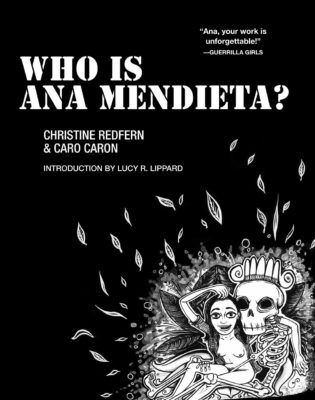Who Is Ana Mendieta?
Retour à publications By Christine Redfern & Caro Caron
By Christine Redfern & Caro Caron
The Feminist Press, NY
“Ana’s death is one of millions that, despite four decades of feminist struggle, remain underestimated—social crimes that have yet to be fully confronted. . . . The very directness of the graphic novella is an ideal vehicle for the outrage women feel about the extent of domestic and general violence against us. May there be many more visual outcries like this one, to avenge the loss of women like Ana Mendieta.”
— Lucy R. Lippard, from the introduction
This gripping graphic novel richly documents the tragically brief life of artist Ana Mendieta (18/11/1948 – 8/09/1985), her violent death & it’s aftermath.
Starting in 1973, Mendieta filmed her ephemeral earth-body sculptures and performances using photography and the latest video technology. Her subject was the female form, her subject matter the power and transience of life. Producing close to eighty films during her career, she is one of the most prolific filmmakers of her generation and a pioneer of the video art genre. She was also brown-skinned, female and an immigrant. Coming of age in the United States at the height of the feminist revolution and civil rights movement – everything, including equality, must have seemed possible.
In 1985, Mendieta married well-known Minimalist sculptor Carl Andre. Less than eight months later, already planning to divorce him, she plunged from the 34th floor window of his Greenwich Village apartment. Though Andre (like O.J. Simpson) was acquitted of his wife’s murder, as Calvin Tomkins in the Dec. 5, 2011 issue of The New Yorker notes, “Except for initial confused and somewhat contradictory statements to the police, (Andre) never talked to anyone about Mendieta’s death.”
Mendieta’s art has grown more relevant with the passing of time. It reminds us we are not above nature, not separate from nature, not in control of nature – but one small part of nature. Her works are an attempt to move us beyond the male/ female, virtual/real, contemporary/ancient dichotomy, to a place that doesn’t separate us into what we are or aren’t, but instead connects us, from the micro to the macro, from the past to the present, to everything that surrounds us.
Books available at ELLEPHANT, The Feminist Press and Amazon.com

